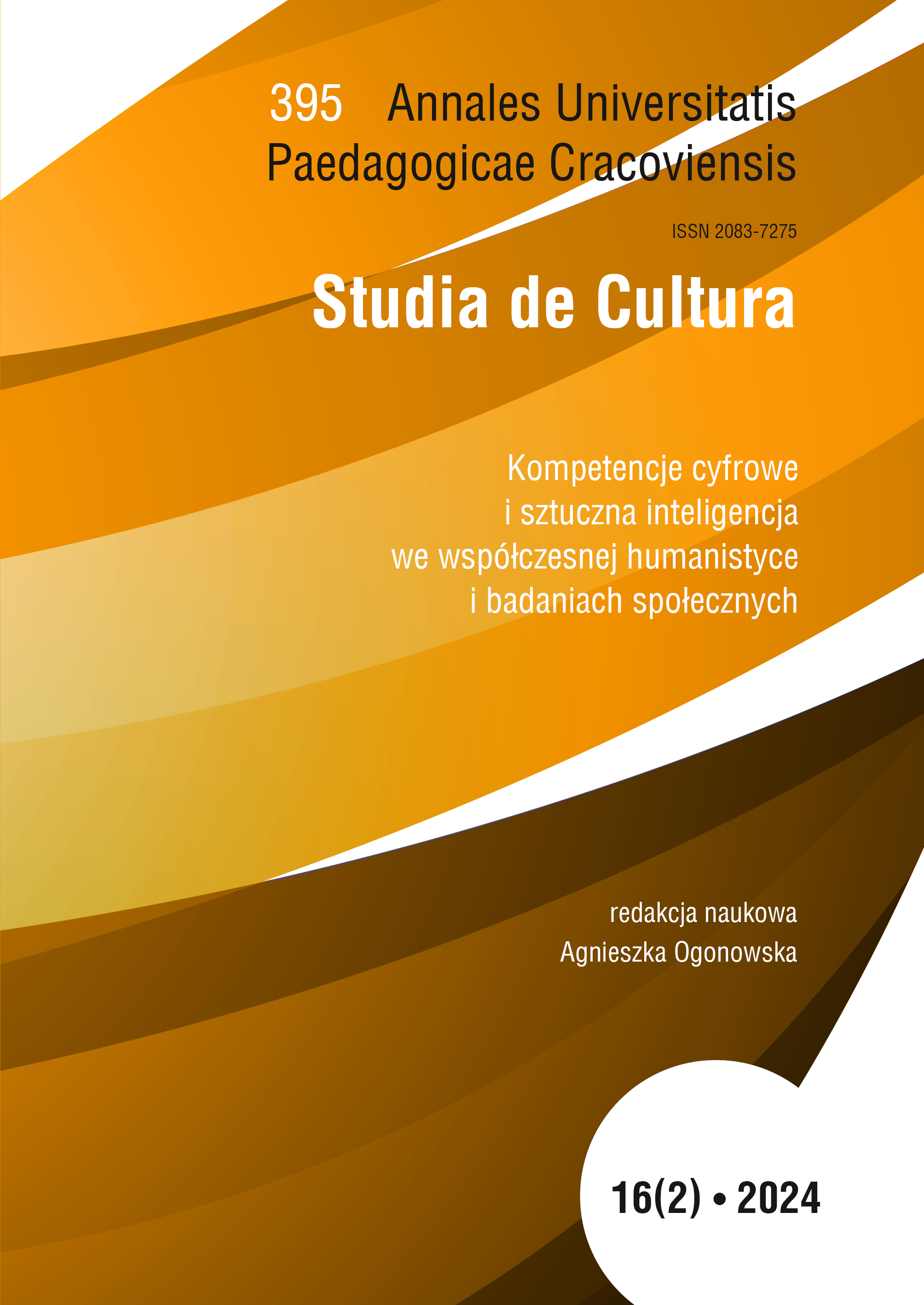Abstract
The article focuses on the cultural, developmental and neurocognitive determinants of audio competences in relation to three approaches: media studies, relational-functional and (neuro)-
cognitive-developmental. Types of audio competences (e.g. discursive, extra-discursive, musical) are also included; natural and artificial auditory spaces and their role in learning processes. A separate place in these considerations was devoted to the issue of intermedia translation (e.g. image into sound) in the context of “non-neurotypical” strategies for receiving audio stimuli and messages; attention was paid to various methods of examining these competences. The aim of the article is to emphasize their role in the teaching of subjects as well as the implementation of projects addressed to people with special educational needs, non-neurotypical people or representing different dominant model – the so-called hearing culture. Auditory competences are not only the foundation for the effective reception of many digital messages, e.g. audio and audiovisual, but also constitute the basis for creating new media products in digital culture 3.0. Hence, the emphasis on the development of knowledge and related research seems to be particularly important in contemporary digital culture.
References
Bourdieu Pierre. 2005. Dystynkcja. Społeczna krytyka władzy sądzenia. Piotr Biłos (przeł.). Warszawa.
View in Google Scholar
Cieszyńska‑Rożek Jagoda. 2018. Neurobiologiczne podstawy rozwoju poznawczego. Część 1: Słuch. Kraków.
View in Google Scholar
Cieszyńska‑Rożek Jagoda. 2022. Neurobiologiczne podstawy rozwoju poznawczego. Część 4: Język. Kraków.
View in Google Scholar
Corey Alex W. 2020. Sounding out racial difference. W: Michael Bull (ed.). The Routledge Companion to Sound Studies. New York. 99–107.
View in Google Scholar
Domański Henryk, Przybysz Dariusz, Wyrzykowska Katarzyna M., Zawadzka Kinga. 2021. Dystynkcje muzyczne: stratyfikacja społeczna i gusty muzyczne Polaków. Warszawa.
View in Google Scholar
Erlmann Veit. (red.). 2004. Hearing Cultures. Esseys on Sound, Listening, and Modernity. Oxford.
View in Google Scholar
Gardner Howard. 1995. Frames of Mind: The Theory of Multiple Intelligences. London.
View in Google Scholar
Gibson James J. 1979. The Ecological Approach to Visual Perception. Hillsdale, NJ.
View in Google Scholar
Goodman David. 2020. Propaganda and Sound. W: Michael Bull (ed.). The Routledge Companion to Sound Studies. New York. 90–98.
View in Google Scholar
Howes David. 2022. The sensory studies manifesto. Toronto.
View in Google Scholar
Jakobson Roman. 1971. Selected Writings. II: Word and Language. The Hague.
View in Google Scholar
Lazear David. 1991. Seven ways of knowing: Teaching for multiple intelligences. Palatine, IL.
View in Google Scholar
Minsky Laurence, Fahey Coleen. 2017. Audio branding: using sound to build your brand. London.
View in Google Scholar
McLuhan Marshall. 1992. Laws of Media. Toronto–New York.
View in Google Scholar
McLuhan Marshall. 1994. Understanding Media: The Extension of Man. Cambridge, MA.
View in Google Scholar
Ogonowska Agnieszka. 2023. „Bez obrazu, czyli seriale audio. Problematyka kreacji świata przedstawionego i jego recepcji”. Studia Filmoznawcze 44. 131–143.
View in Google Scholar
Ogonowska Agnieszka, Stoch Magdalena. 2023. „Kulturoznawstwo medialne, czyli o wytwarzaniu wiedzy społecznie użytecznej. Mapowanie pola badawczego oraz istniejących praktyk (cyber)kulturowych”. Studia de Cultura 15, 1. 113–126.
View in Google Scholar
Ogonowska Agnieszka. 2010. Twórcze metafory medialne. Kraków.
View in Google Scholar
Ong Walter J. 1991. „The Shifting Sensorium”. In The Varieties of Sensory Experience. David Howes (ed.). Toronto. 25–30.
View in Google Scholar
Orłowska‑Popek Zdzisława. 2017. Programowanie języka w terapii logopedycznej. Na przykładzie rozwoju języka dzieci niesłyszących. Kraków.
View in Google Scholar
Platon. 2009. Państwo. Władysław Witwicki (przeł.). Kęty.
View in Google Scholar
Porcello Thomas, Patch Justin. 2022. Re‑Making Sound. An Experiential Approach to Sound Studies. New York.
View in Google Scholar
Reinart Sylvia. 2014. Lost in Translation (Critisism)?. Berlin.
View in Google Scholar
Stoller Paul. 1989. The Taste of Ethnographic Things: The Senses in Anthropology. Philadelphia, PA.
View in Google Scholar
Thompson Marie. 2020. Gendered Sound. W: Michael Bull (ed.). The Routledge Companion to Sound Studies. New York. 108–117.
View in Google Scholar
Welsch Wolfgang. 2000. Na drodze do kultury słyszenia?. Krystyna Wilkoszewska (przeł.). W: Eugeniusz Wilk (red.). Przemoc ikoniczna czy nowa widzialność?. Katowice.
View in Google Scholar

This work is licensed under a Creative Commons Attribution-NonCommercial 4.0 International License.
Copyright (c) 2024 Annales Universitatis Paedagogicae Cracoviensis. Studia de Cultura

